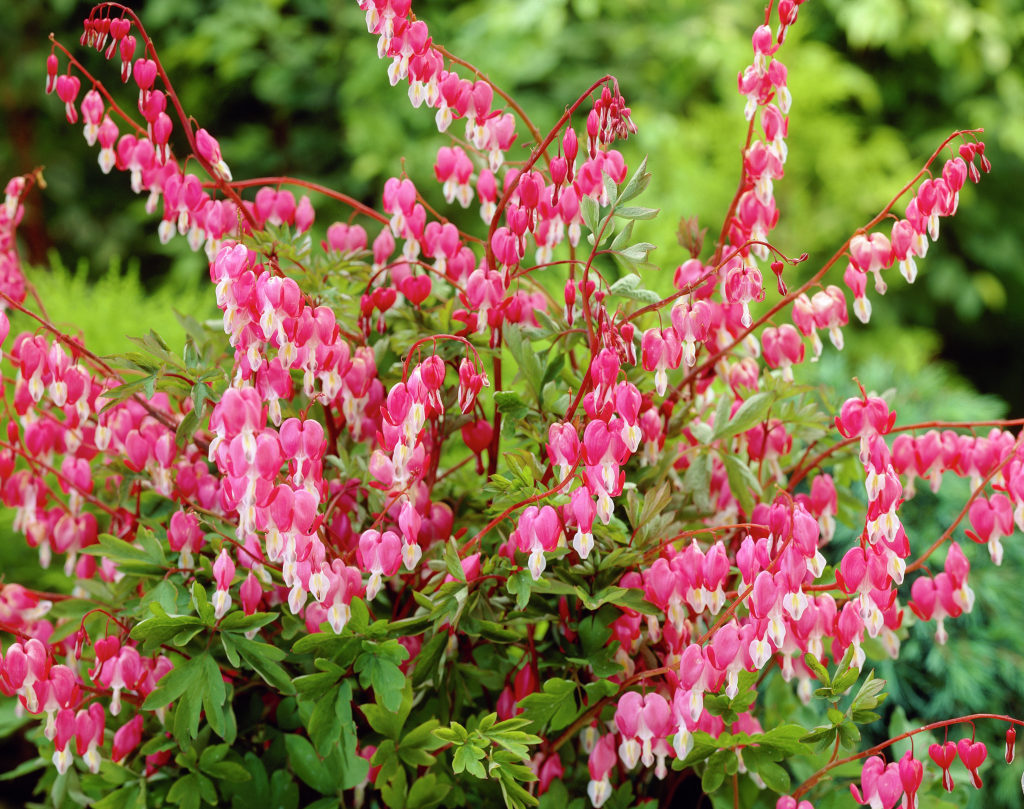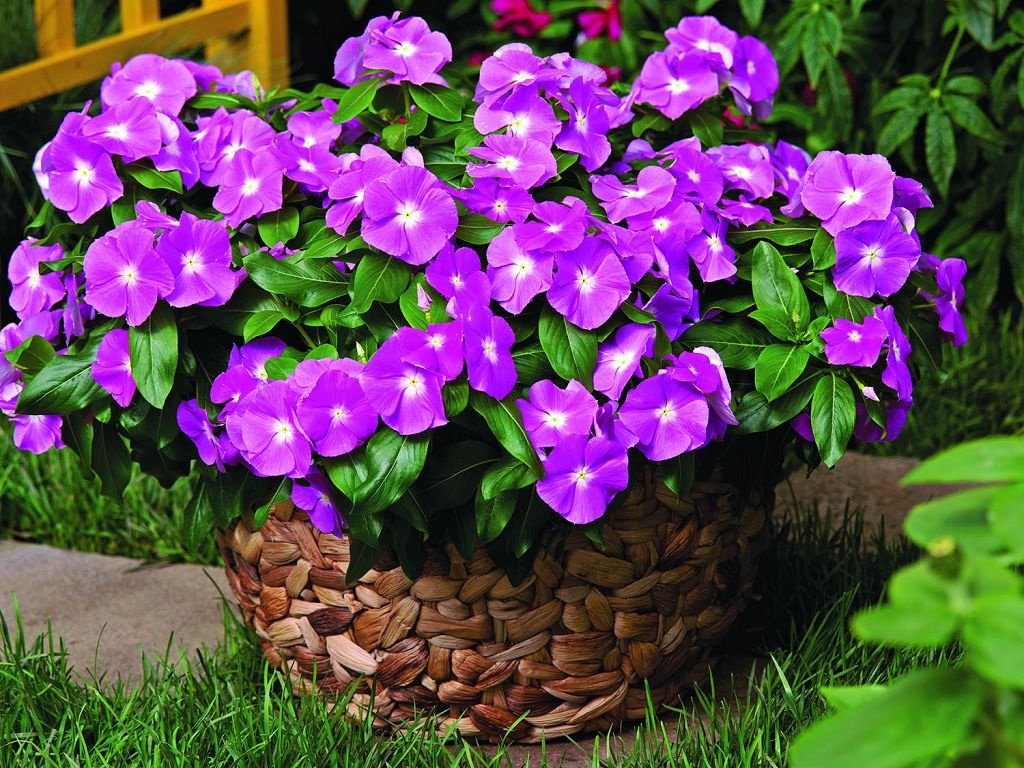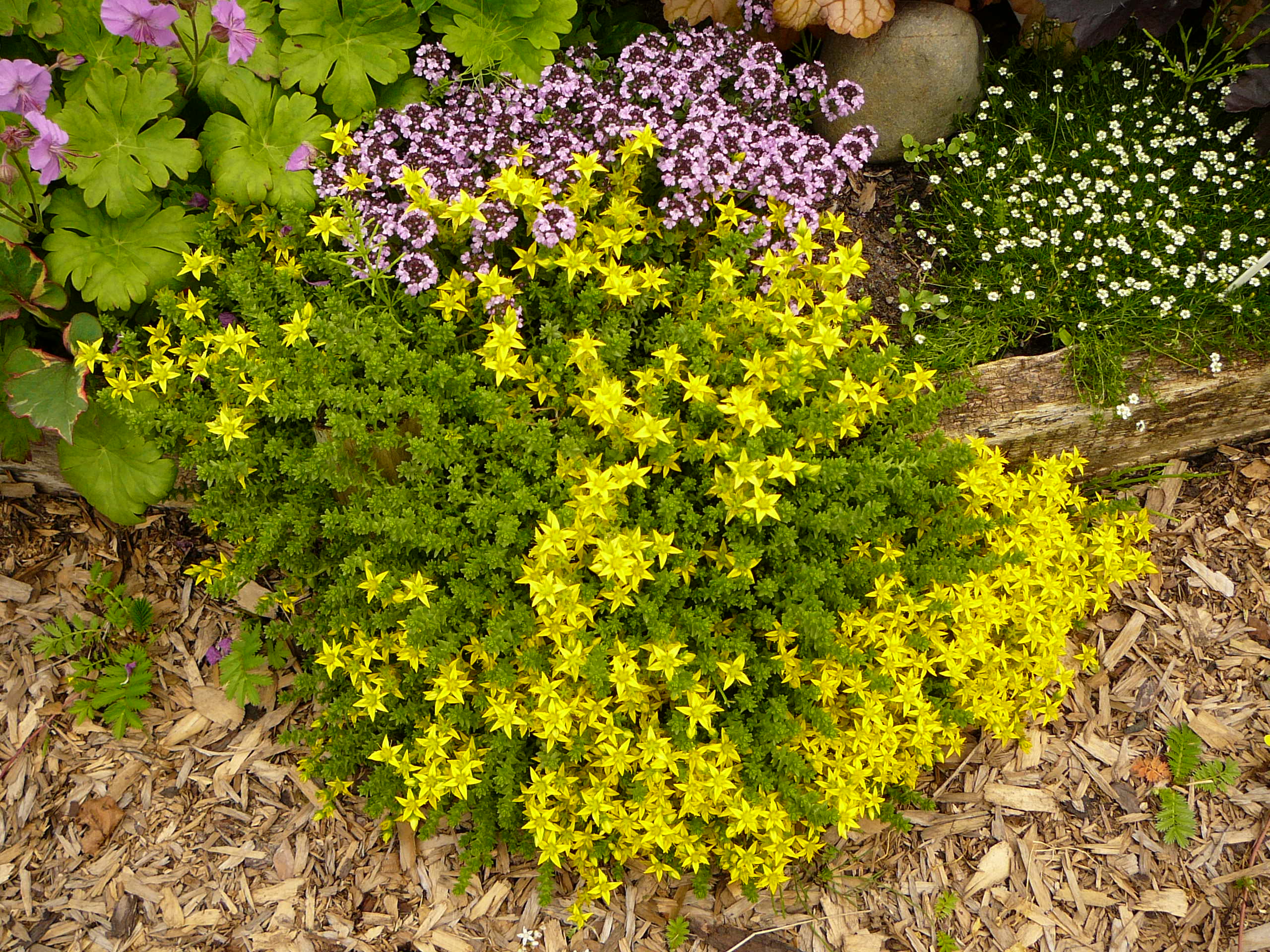There are many plants that grow rapidly and cover the soil with a dense carpet. They are unpretentious to care for, and they are often used by gardeners to control weeds.
Sedum
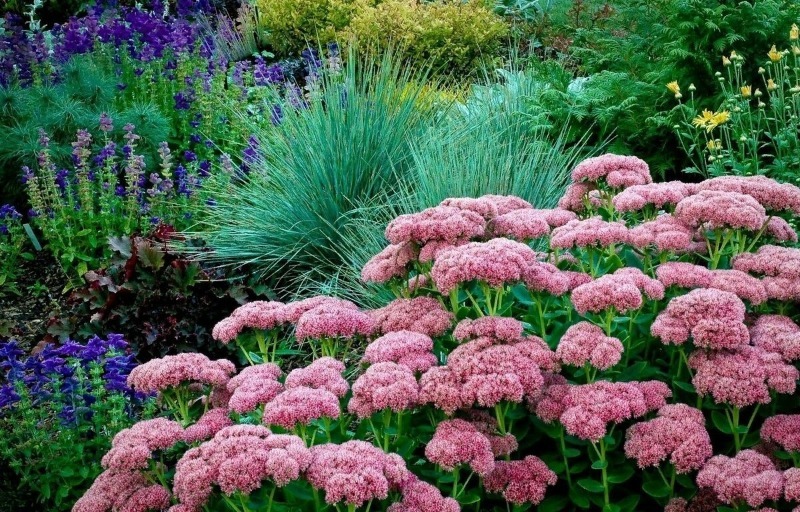
Sedum is a magnificent and unpretentious plant, which is a grass, shrub or semi-shrub. In nature, it grows in the mountains of South America, Africa and Eurasia. More than 500 types of stonecrop are known. The people call it "hare cabbage", "squeaky", "feverish grass".
The plant has a thick branched stem, the leaves do not have petioles and grow from the shoot. Their surface can be painted green, bluish gray or pink. Specimens growing in illuminated places have a more saturated color. Stonecrop leaves have a wide variety of shapes. They can be round, cylindrical, or elliptical. In the second half of summer, small flowers with bent white or yellow petals bloom on it. They have a light scent that attracts numerous insects.
The sedum grows rapidly on fertile soils. He needs a lot of light. It is not picky about care and tolerates a lack of moisture well.
Hosta
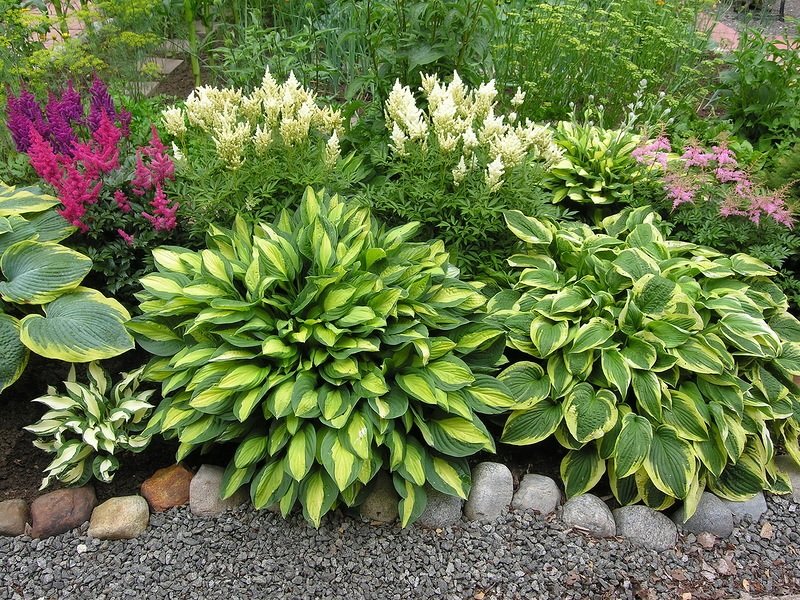
This perennial plant of the Asparagus family is common in the Far East, China and Japan. It is appreciated for its large ornamental leaves and its ability to grow in the shade. Within a short time, the hosta forms a full-fledged lush bush up to 120 cm high, which occupies a large area around which no other plants grow. The host's root system is powerful and well developed. It provides a strong attachment of the bush to the soil. The stem is short, erect, covered with a thick dark green skin. The leaves are collected in a basal rosette and are arranged on long petioles. They can be round, lanceolate, heart-shaped. The surface of the plate is matt or glossy, bumpy or smooth. The color of the foliage can change during the season. The most common varieties are with yellow, gray or bright green foliage. Bell-shaped flowers are collected in inflorescences. The petals are purple or pink. After flowering, the plant produces fruit in the form of a box with small black seeds.
Dicenter
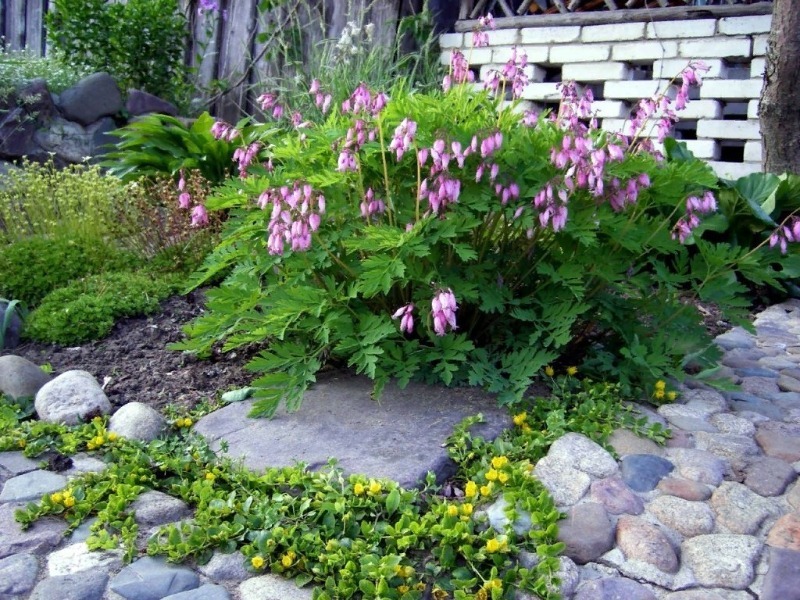
The garden dicentra is a perennial herb, some varieties of which may be bush-shaped. In the wild, the dicenter grows in Asia and North America. The dicentra has a straight stem, the height of which reaches 1.5 meters and a well-developed fleshy root system, which is sensitive to high moisture content in the soil. The leaves grow on long petioles, smooth, with a slight sheen.
The flowers are shaped like a heart, for which the people often call the plant "broken heart". They are collected in cluster inflorescences of 10 - 15 pieces. The outer petals are bright pink, almost red, and the middle is white. Flowering is most often long lasting and lasts until mid-summer. But even after it the dicenter pleases with its lush openwork bushes.
Runny variegated
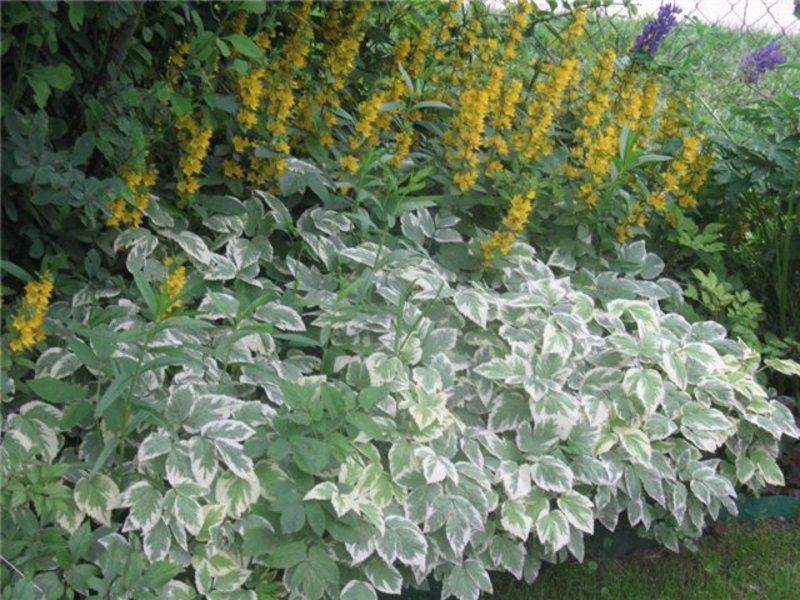
Runny variegated is a perennial herb of the Umbrella family. It has a long life span of up to 50 years.Creeping is considered to be a weed plant because it covers the soil with a dense carpet and slows down the evaporation of moisture. The foliage of the plant has an unusual pistachio color with white edging along the edges of the leaf plate. Dream inflorescences are formed by small white flowers. Flowering lasts about a month and occurs if the plant grows in sunny areas.
In garden plots, runny variegated is often used as a groundcover. It is planted in shaded areas where it forms a wonderful dense carpet. For planting, it is recommended to use metal containers with large openings. This planting method will prevent crowding out other ornamental plants.
Periwinkle
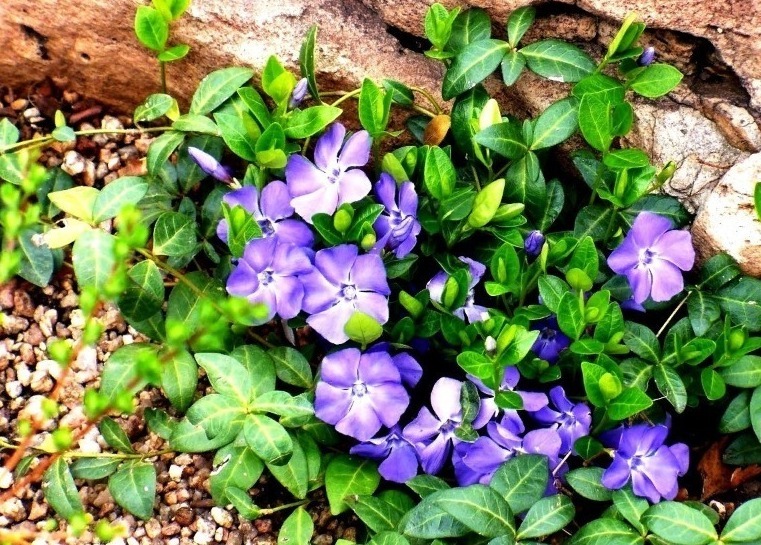
Periwinkle is an evergreen shrub with long, creeping shoots covered with dense reddish skin. The root system is located close to the soil surface. The foliage is oval in shape with a rich green color with a white or yellow border around the edges. The leaves are distinguished by their vitality and retain their color even under the thickness of snow. Peduncles grow vertically upward in the leaf axils, but then descend under the weight of the buds. The flowers reach 3 cm in diameter. The color of the petals is varied: from white to purple. Flowering is short, lasts about a month, from May to June.
Periwinkle can grow in shaded dry areas of the garden, near trees and bushes, covering the ground with a dense carpet of strong shoots. Among gardeners, periwinkle is considered to be an aggressive plant, since it is able to displace other crops from fertile soil. The flower grows quickly, so it is necessary to constantly monitor the planting.
